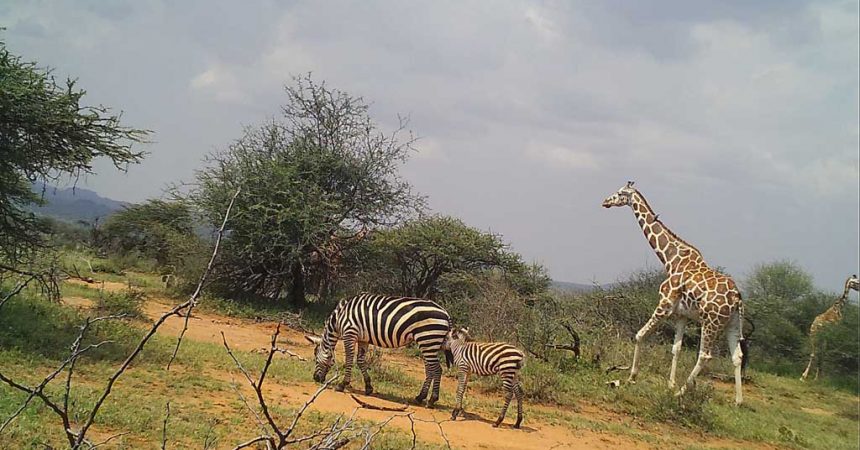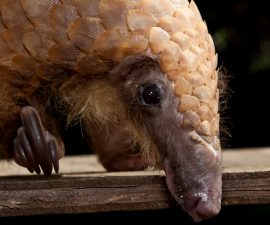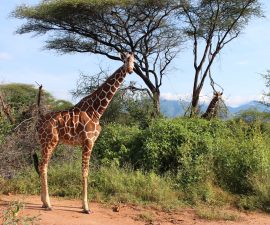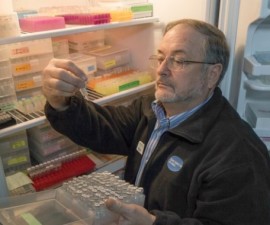If you’ve ever dreamed of Africa—and many of us have!—you will enjoy being part of our Wildwatch Kenya team, which classifies field photos taken at two conservancies in northern Kenya. According to the International Union for Conservation of Nature (IUCN) Red List of Threatened Species, the reticulated giraffe, one of the most iconic mammals on the planet, has declined by over 70 percent over the past 20 years—from 36,000 to fewer than 9,000 today. Poaching, loss of contiguous habitat, and land degradation are all pushing the giraffe toward an ominously named “silent extinction.” But there is hope!
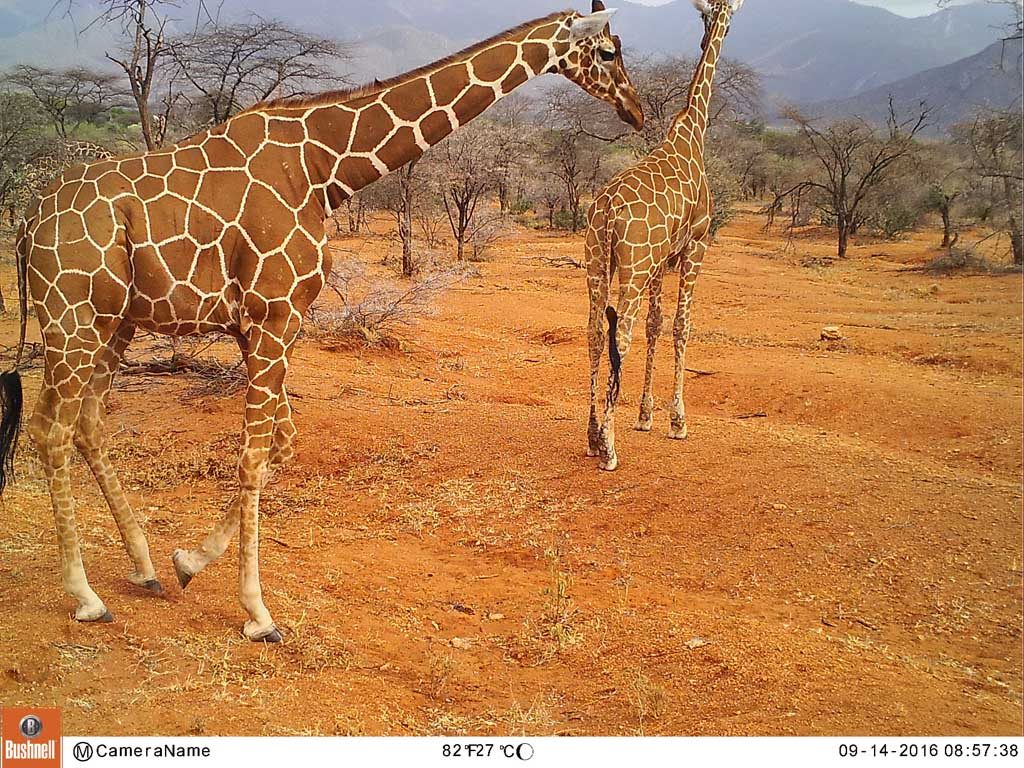
By classifying the photos from the field cameras, researchers will gain a clearer understanding of giraffe behavior and how they use the landscape, which will help guide conservation efforts.
San Diego Zoo Global (SDZG) is committed to reversing this negative trend. To effectively help protect the reticulated giraffe, researchers must first understand how these towers of the savanna use their habitat.
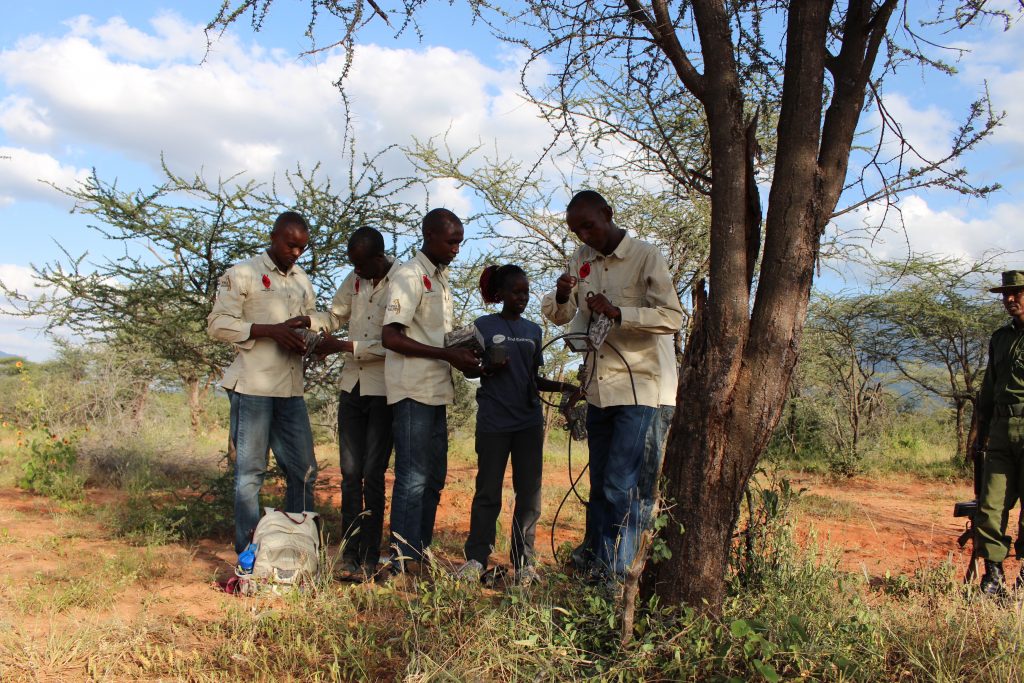
The Twiga Walinzi team installs and monitors field cameras, among other duties to support the project and local wildlife.
As part of SDZG’s collaborative conservation effort, over 100 motion-activated cameras have been installed at two research sites in northern Kenya: Loisaba Conservancy and Namunyak Community Conservancy. A local team of Twiga Walinzi (which means Giraffe Guards in Swahili) is conducting field research to study and identify individual giraffes, while monitoring field cameras, engaging with local communities, and removing poachers’ snares from the conservancy sites.
When the memory cards are collected from the field cameras, the photos are uploaded to the Wildwatch Kenya site, located on a citizen science platform called Zooniverse. Here, people from around the world—including you—can help us identify and count species found throughout the study site from the comfort of their computer. So far, over 11,000 volunteer citizen scientists have helped us classify over half a million images, such as:
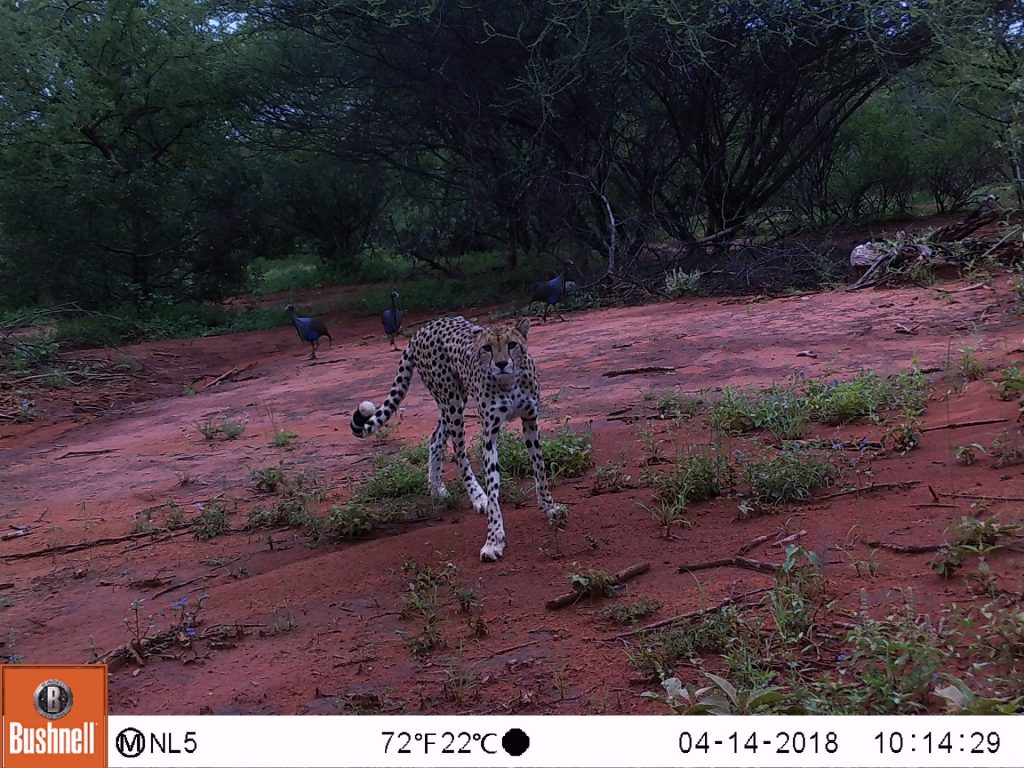
It’s a banner day to discover a cheetah on a field camera!
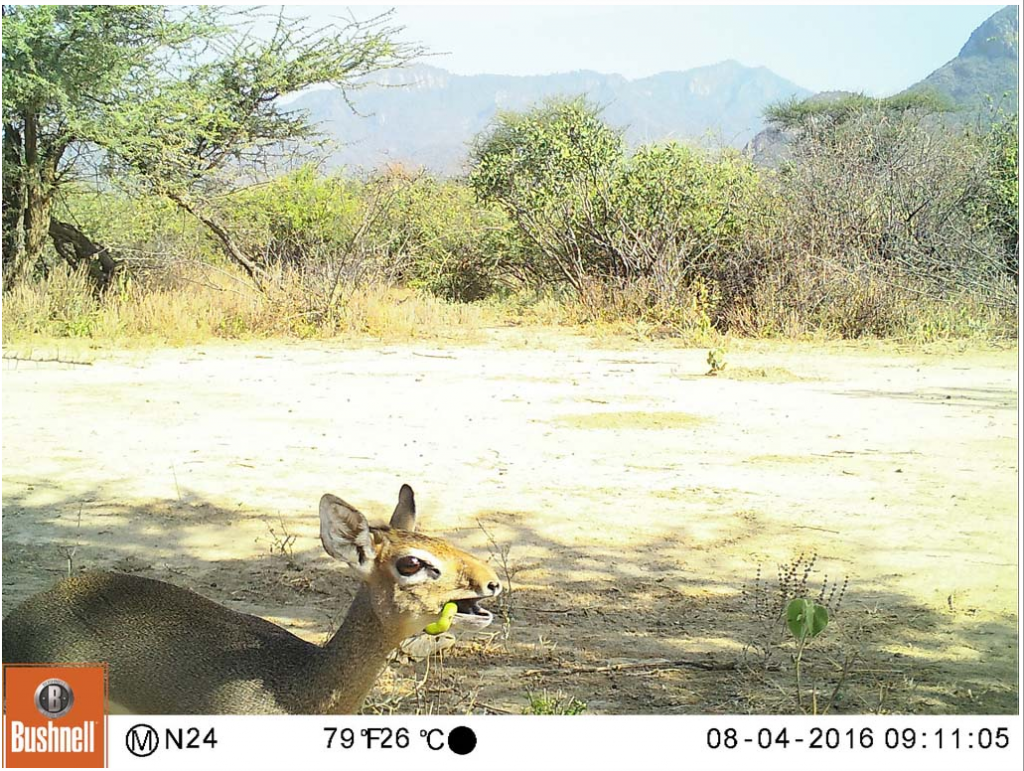
A dik-dik having a snack.
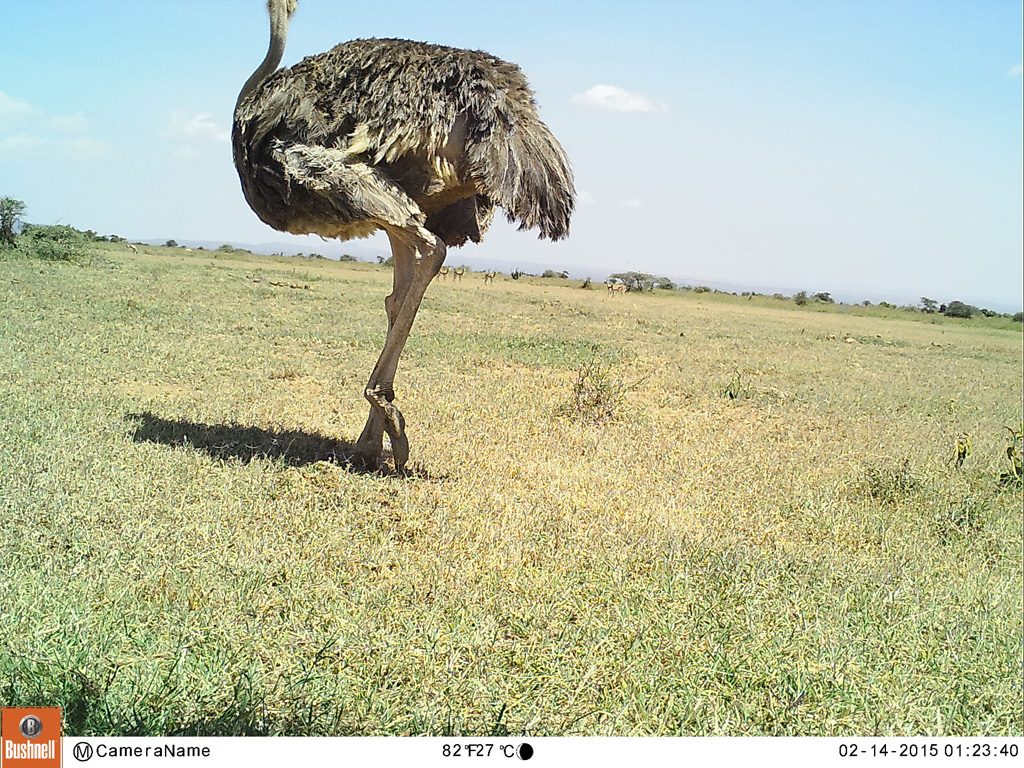
Exciting to see an ostrich, even if its head is cut off.
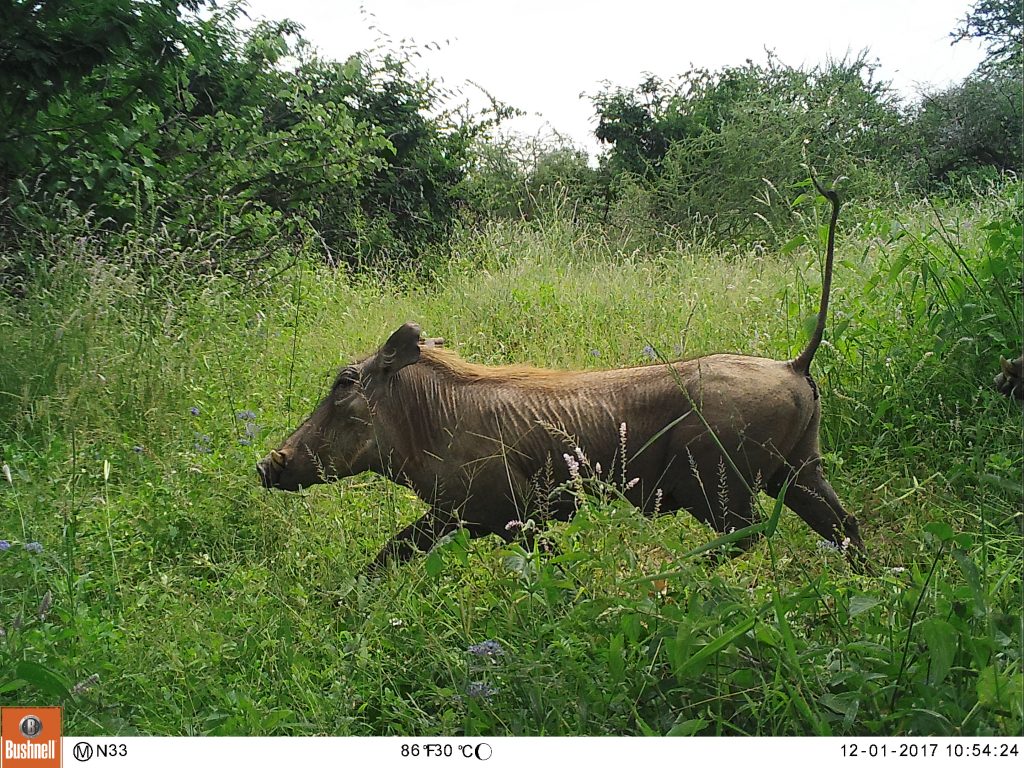
Warthog on the move!
The data on giraffe ecology and interactions (and the presence of other species, including people) will provide science-based information to land owners and managers to assist in decision making and building a sense of community ownership around the conservation of this special species, and others that share their habitat.
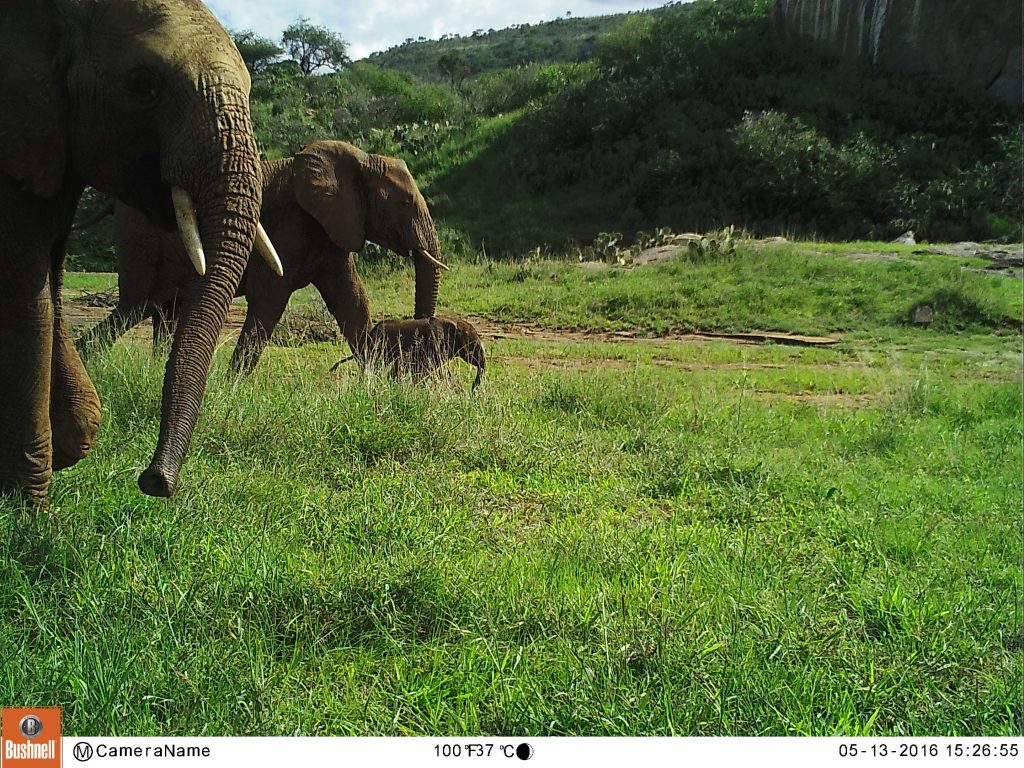
Fantastic glimpse into the roaming life of elephants. The presence of youngsters is a good sign.
We are deeply grateful to our trusty volunteers patiently parsing through the field photos, and we invite you to join our Wildwatch Kenya team to help out reticulated giraffes. Let’s keep the dream alive!
Karyl Carmignani is a staff writer for San Diego Zoo Global. Read her previous article, The Casque.

